This baked Char Siu Bao (叉烧餐包) is different from the steamed Chinese pork bun.
Traditionally Char Siu Bao is a steamed meat bun mainly served in Dim Sum restaurants during breakfast. The baked version comes to popularity due to the hybrid of dinner rolls and the steamed pork buns.
There is no authentic recipe for these buns, and I have decided to formulate it based on my Japanese milk bread and steamed pork bun recipe with some tweaking.
Since this bun is fondly called Char Siu Bao, regardless of whether it is made with barbecue pork or other meat, I will describe it as Char Siu Bao throughout this article.
Note: The word 包, which means bun, is translated as bao or pao. Both translations are used in different recipes and menus.
Note: This post may contain affiliate links. Please read my privacy policy for more info. I may receive commissions for purchases made through links in this post. As an Amazon Associate, I earn from qualifying purchases.
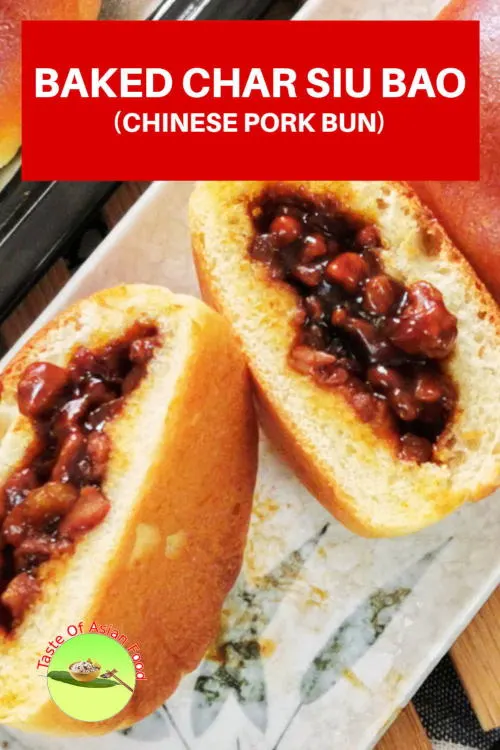
How to make Baked Char Siu Bao
There are two major steps in this baked Char Siu Bao recipe. First, we need to make the bread dough, not the pao dough. Although both require yeast as the leavening agent, the pao dough also requires a secondary leavening agent, either baking powder or ammonium bicarbonate. Please refer to my steamed Char Siu Bao recipe for the details. Yeast is the only leavening agent in this baked Char Siu Bao, similar to most of the bread recipes.
1. Prepare the Char Siu Bao dough
The dough is primarily a bread dough enriched with egg and butter and includes a small amount of cooked flour (called TangZhong 汤种) to soften the dough texture. It is pretty easy to prepare if you are familiar with how to make bread.
Here are the steps:
- Add a teaspoon of sugar to some water and sprinkle the active dry yeast into it. Gently stir the mixture to dissolve the yeast and let it rest for ten minutes before use.
- Mix the bread flour with cold water in a small saucepan. Gently heat while stirring until the flour starts to thicken until you can draw lines on it. The starch should have cooked and become opaque. Remove from heat and let it cools before use.
- Pour the bread flour, milk powder, yeast mixture, sugar, salt, egg, and Tangzhong into a mixing bowl. Combine the ingredients with a spatula. Gently stir until they clump together. The dough is very sticky initially, but it will become more manageable after leaving it aside for ten minutes.
- After ten minutes, the dough will become more elastic and pull away from the mixing bowl.
- Sprinkle some flour on the work surface. You can use a marble table or a pastry mat like I did. Start kneading the dough for five minutes, which will become more elastic progressively. When the surface of the dough starts to become shinny, roll out the dough thinly, and place the softened butter at the center. Fold the sides of the dough toward the center to encase the butter.
- Knead the dough gently to combine the butter with the dough. Part of the butter will break out from the dough, and it will be a bit messy at this stage. Continue the knead it for a few more minutes until the dough has incorporated all the butter. The dough has now become softer, very pliable, and no longer sticky. The surface now becomes smooth and shiny.
- Transfer the dough to a container. Cover it either with a damp cloth or a lid. Let it rest at room temperature for the first fermentation. The dough will eventually double its size after forty-five minutes, but the actual duration depends on the yeast and the temperature.
2. Cook the Char Siu filling
As the name suggests, the filling of the bun is Char Siu (Chinese barbecue pork). Please check out this recipe if you intend to make it from scratch. Alternatively, use the store-bought Char Siu as the filling to save time.
I want to introduce an alternative method to make the filling in this recipe. You can approximate the taste of the Char Siu filling with any meat. The most common meat is pork, but chicken has become a popular alternative where I live. The taste is nearly identical to using Char Siu except for the barbecue flavor.
Here are the steps:
- Heat some oil in the pan over medium heat. Saute some diced onion until it starts turning aromatic and becomes translucent.
- Stir-fry the pork fat in the pan over low heat until the oil starts to render.
- Return the onion to the pan.
- Add the lean meat and stir fry until it is fully cooked.
- Mix all the seasoning ingredients as listed in the recipe with the meat.
- Thicken the gravy with some cornstarch slurry. The amount of cornstarch should be enough to form a thick gravy. It will leak from the filling during wrapping if it is too diluted.
Tips:
- The texture and mouthfeel are best if you use a mixture of lean pork with some fat. My preferred ratio is about 1 part of fat to 5 parts of lean meat. It is easier to cut it into small dice by cutting the lean meat and pork fat separately. You will also find it easier to cut it if it is in a semi-frozen state.
- If you use barbecue pork to prepare the filling, cut it into small dice, then mix with the sauteed onion and seasoning. It safe you time to cut and stir-fry the meat.
- A significant part of the filling is the gravy, which is also called Char Siu sauce and is versatile to cook various stir-fries.
- The various seasoning ingredients I use are typical for making Char Siu sauce. The keys ingredients are light soy sauce and oyster sauce, with some sugar to balance the saltiness. Besides that, dark soy sauce gives it a dark, caramelized color and some Chinese five-spice powder. You can adjust the amount of these ingredients to your taste.
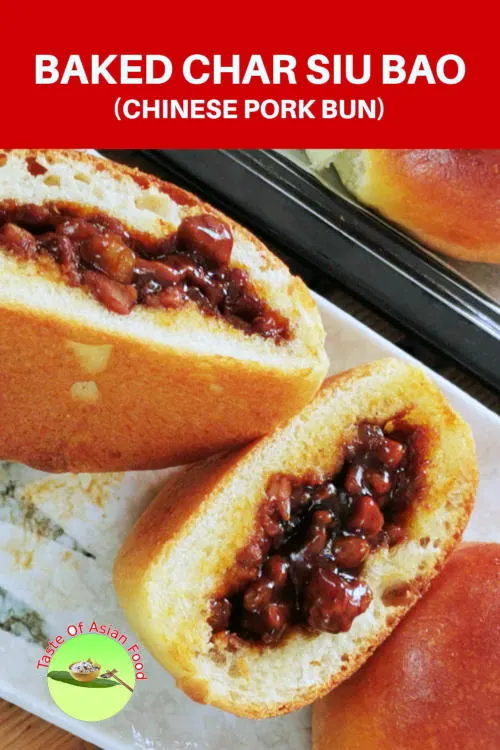
3. Shape the dough and wrap the filling
- After the dough has doubled its size, remove it from the container and place it on a floured work surface.
- Punch out all the air inside the dough, then knead it for a minute.
- Divide the dough into ten equal portions. I made ten portions from this recipe, and each portion is 50g. You may want to make some smaller buns base on your preference. The amount of filling for each 50g dough is about 30g. Please adjust the amount according to the same ratio if the size of your Char Siu Bao is different from this recipe.
- Roll each portion into a round ball, then flatten it with your palm. Set aside five minutes to let the dough relax before wrapping the fillings.
- Roll out one portion of the dough to a circle about 8 to 10 cm with a small rolling pin. Try to keep the shape to a circle to encase all the filling inside the dough. Leave the center part of the dough slightly thicker, as we will overturn the bun after wrapping, and that part will be the top of the bun.
- Weigh 30g of the filling and place it right at the center, and keep the sides at least 1cm clean from the filling. The cornstarch in the filling will hold the gravy and should not flow out to the sides. If you find that the gravy is too thin, reheat the filling to thicken the gravy before wrapping it with the dough.
- Pleat the dough along the side to encase all the filling at the center. Press the folding firmly so that the gravy and meat will not leak out while baking.
4. Bake the bao
- Turn the bun upside down, seam side at the bottom.
- Place the buns on the baking tray lined with oiled baking paper, with about a one-inch gap in between. Let it proof until the size expands to 1.5x of the original size.
- Beat an egg. Apply a thin layer of egg wash on each bun.
- Preheat the oven to 190°C/375°F, upper and lower heat. Bake the buns on the middle rack for twenty minutes or until golden brown.
- Remove the buns from the oven. Apply some melted butter on each bun. Serve.
Other recipes related to baked Char Siu Bao
If you like this recipe, chances are you will also enjoy other Chinese Dim Sum. Here are my picks:
Har Gow (or Chinese prawn dumpling) is a traditional Cantonese Dim Sum serving steaming hot during breakfast. This recipe explains how to make it in detail.
Shumai is the well-known Dim Sum, along with a barbecue pork bun and shrimp dumpling. It is made with minced meat and shrimp wrapped with the shumai (or wonton) wrapper. Try it as this is one of the easiest Dim Sum to make.
Turnip cake is crispy outside and yet tender, almost melting in the mouth inside. It is a savory ‘cake’ and is even better if you pan-fried it right before serving.
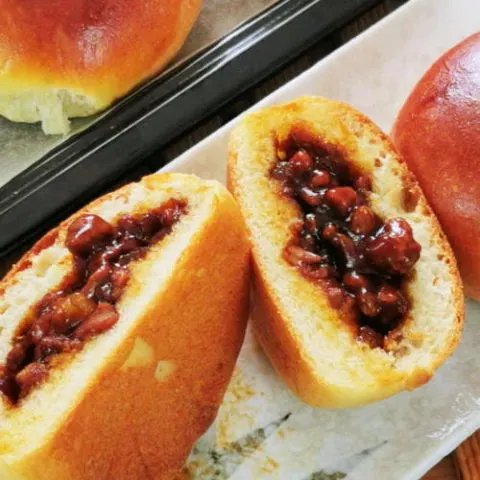
Baked Char Siu Bao
This baked Char Siu Bao (叉烧餐包) is different from the steamed Chinese pork bun.
Traditionally Char Siu Bao is a steamed meat bun mainly served in Dim Sum restaurants during breakfast. The baked version comes to popularity due to the hybrid of dinner rolls and the steamed pork buns.
Ingredients
Ingredients A (TangZhong)
- 15g (0.5 oz) bread flour
- 65g (4 tbsp) water
Ingredients B (Bread dough)
- 250g (2.8 cups) bread flour
- 55ml (1.8 oz) water
- 10g (1/3 oz) milk powder
- 35g (1.2 oz) castor sugar
- 3g (1 tsp) active dry yeast
- 1/2 tsp salt
- 1 egg
- 40g (1.4 oz) butter
Ingredients C (Filling)
- 1 tbsp vegetable oil
- 1/2 medium-size onion
- 300g (2/3 pound) pork
- 2 tbsp light soy sauce
- 1.5 tbsp dark soy sauce
- 3 tbsp oyster sauce
- 1.5 tbsp sugar
- 1/4 tsp five-spice powder
- 1 tbsp cornstarch
- 150 ml (0.6 cups) water
Instructions
For the dough
- Yeast mixture: Add a teaspoon of sugar to 55ml water and sprinkle the yeast into it. Gently stir the mixture to dissolve.
- TangZhong: Mix the bread flour with cold water in a small saucepan. Gently heat while stirring until the flour starts to thicken until you can draw lines on it.
- Pour the bread flour, milk powder, yeast mixture, sugar, salt, egg, and Tangzhong into a mixing bowl. Combine the ingredients with a spatula. Gently stir until they clump together.
- Kneading the dough for five minutes, roll out the dough thinly, and place the softened butter at the center. Fold and knead until the dough has incorporated all the butter.
- Transfer the dough to a container and wait until it doubles its size.
For the filling
- Heat some oil in the pan over medium heat. Saute some diced onion until aromatic.
- Stir-fry the pork fat in the pan over low heat until the oil starts to render.
- Return the onion to the pan.
- Add the lean meat and stir fry until it is fully cooked.
- Mix all the remaining ingredients in C and cook until it becomes a thick gravy.
Wrap and bake
- After the dough has doubled its size, punch out all the air inside the dough, then knead it for a minute.
- Divide the dough into ten equal portions. Roll each portion into a round ball, then flatten it with your palm.
- Roll out one portion of the dough to a circle about 8 to 10 cm.
- Place 30g of the filling and place it right at the center. Wrap the filling inside the dough.
- Place the buns on the baking tray lined with oiled baking paper, seam side down.
- Let it proof until the size expands to 1.5x of the original size.
- Apply a thin layer of egg wash on each bun.
- Preheat the oven to 190°C/375°F, upper and lower heat. Bake the buns on the middle rack for twenty minutes or until golden brown.
- Apply some melted butter on each bun. Serve.
Recommended Products
As an Amazon Associate and member of other affiliate programs, I earn from qualifying purchases.
Nutrition Information:
Yield: 10 Serving Size: 1Amount Per Serving: Calories: 248Total Fat: 10gSaturated Fat: 4gTrans Fat: 0gUnsaturated Fat: 5gCholesterol: 54mgSodium: 627mgCarbohydrates: 27gFiber: 1gSugar: 6gProtein: 12g
This data was provided and calculated by Nutritionix on 4/25/2021

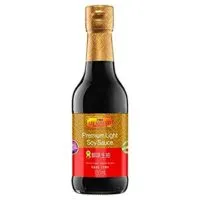

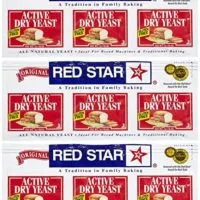

Caroline Szeto
Saturday 23rd of August 2025
Can you freeze these baked BBQ pork buns? Thanks you.
KP Kwan
Saturday 23rd of August 2025
Yes, you can. Let it cool completely before placing it in an airtight container. You can freeze it for later. When you’re ready to serve, thaw it at room temperature, then reheat it in the oven or a toaster until it’s piping hot.
Caroline Jayasuriya
Friday 8th of April 2022
Will it be advisable to make the dough before hand, like the day before?
KP Kwan
Saturday 9th of April 2022
I don't think there is any significant difference to make it ahead, but it is OK to keep it chilled overnight.
Derek Marajj
Sunday 25th of April 2021
I have always enjoyed how you prepare your recipes. Your instructions are clear and well articulated. I admire this. I haven’t tried any of the recipes yet, but will be doing so soon. Thanks for sharing.
KP Kwan
Monday 26th of April 2021
Thank you for reading the articles, and I hope you will try some of the recipes one day.
KP Kwan
Sunday 25th of April 2021
Hi, this is KP Kwan. I am happy to see you in this comment area as you have read through my recipe. I am pleased to reply to any questions and comments as soon as possible.
Elsa
Sunday 25th of April 2021
Yummy. Thanks!